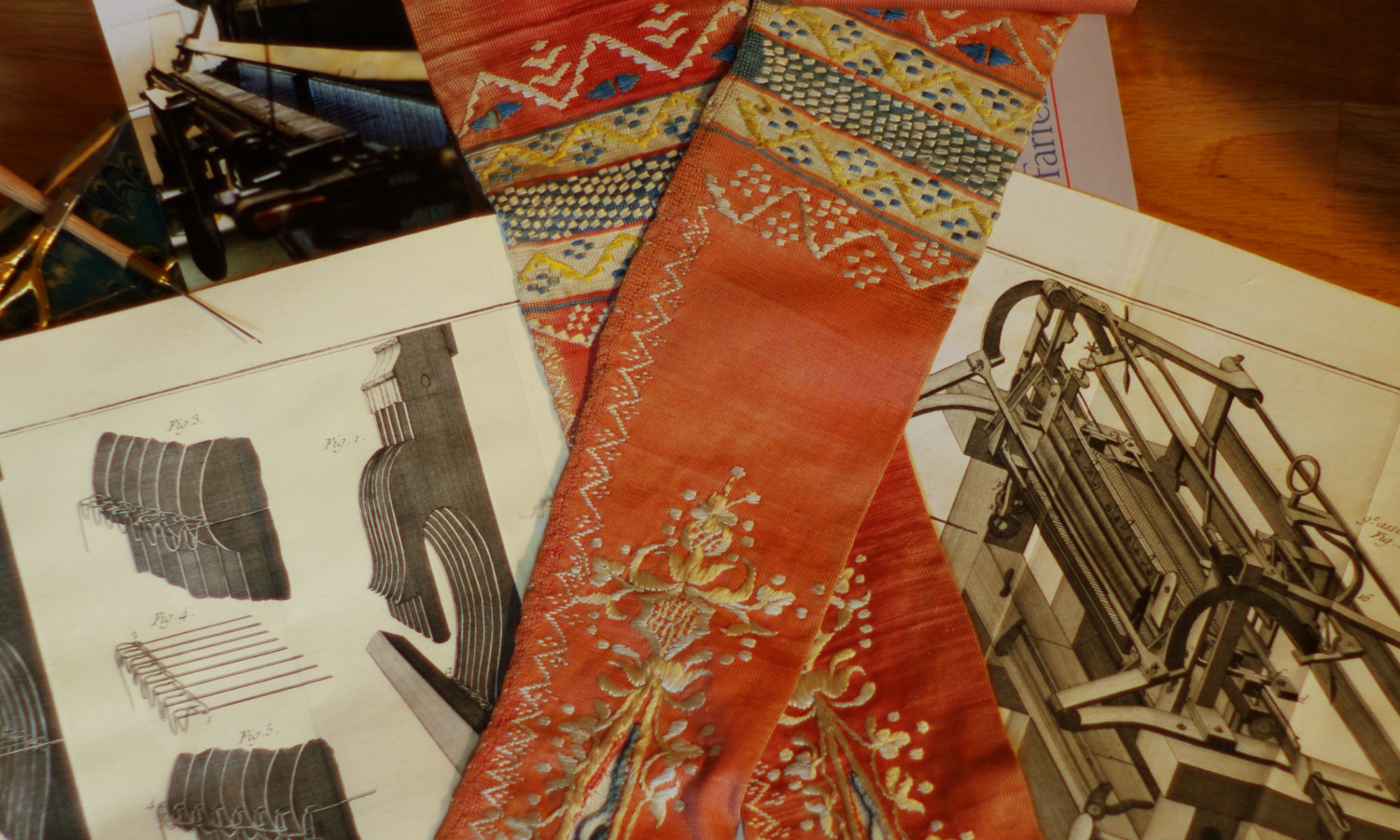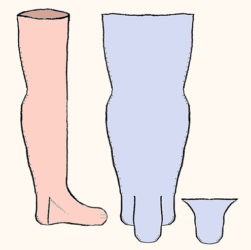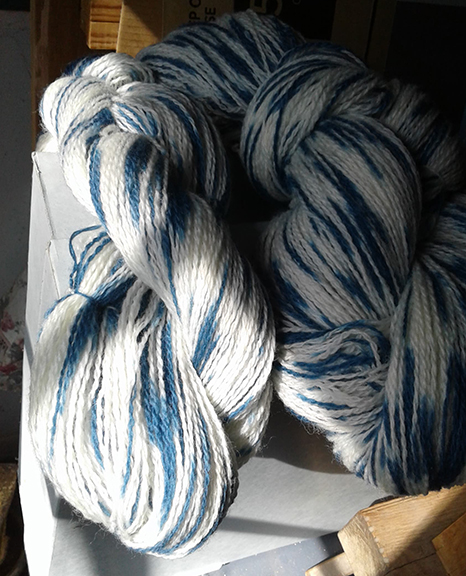
Variegated colors of stockings are found in descriptions. Marbled, marled, speckled, clouded, mottled, and also two threads of different colors twisted together, are some found in 18th century sources such as the Pennsylvania Gazette. For some of these, a small amount of color goes a long way in adding some design.
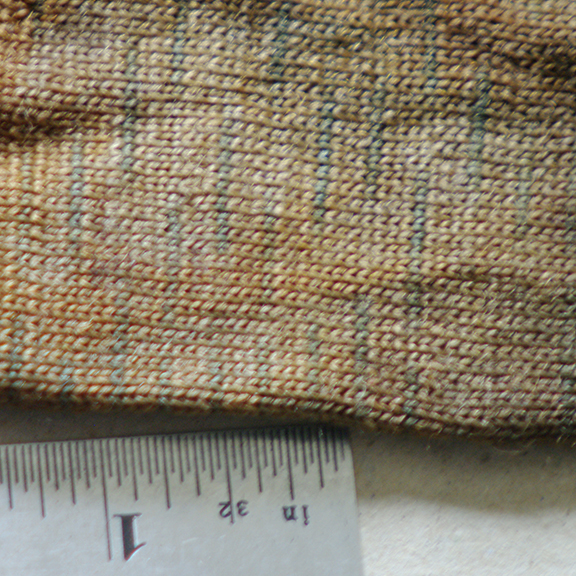
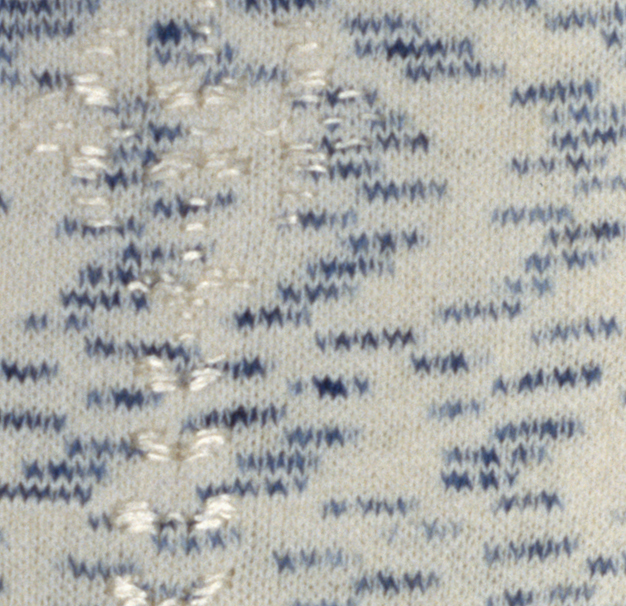
The General Carleton (GC) stockings and the DAR stockings both have patches of blue stitches. The GC stocking was probably also white with blue, but stained “archaeological brown” due to the cargo of tar that preserved the textiles. Notice that the GC stocking has the blue and white yarn every fourth row, and the DAR stocking has it every second row. The colored rows on both seem to be about 50/50 blue and white. The DAR stocking also has clocking, a design stitched onto the ankles in silk thread.
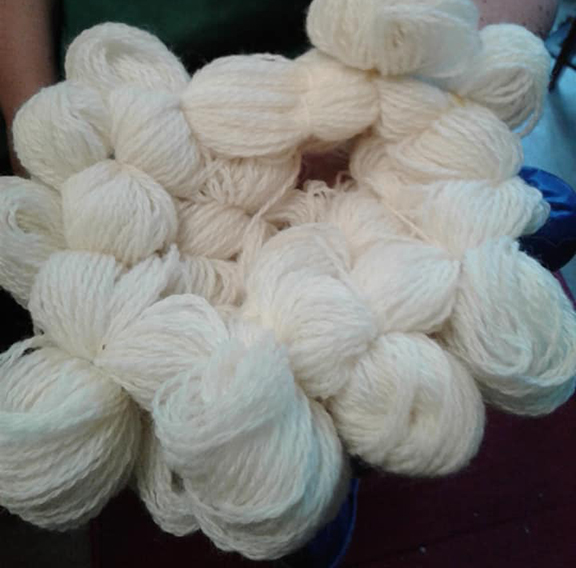
My own experiments began with tying off parts of a skein of yarn into sections. I used rubber bands for this part. For the part of the yarn intended to remain white, I stuffed it into balloons. For the first try, I had someone help by holding the neck of the balloon open. It took some strength and was time consuming, and there had to be a better way.
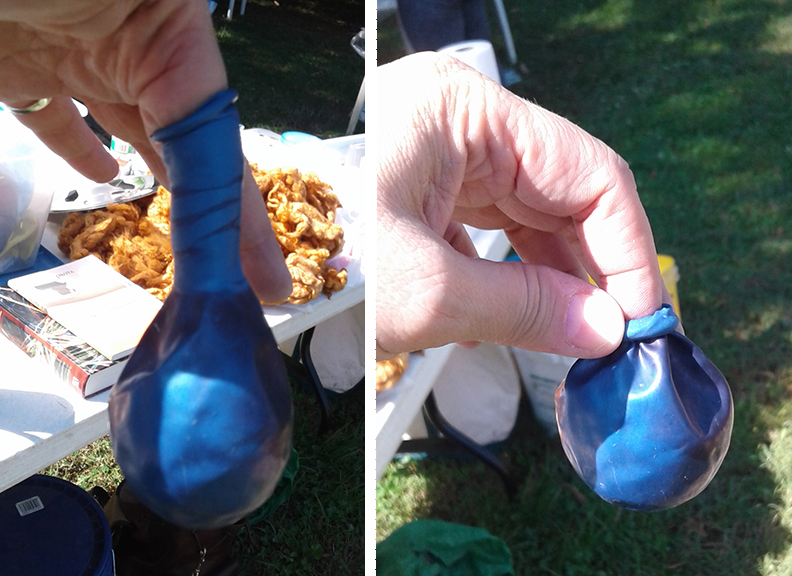
Second go round, I started by rolling down the stem of the balloon.
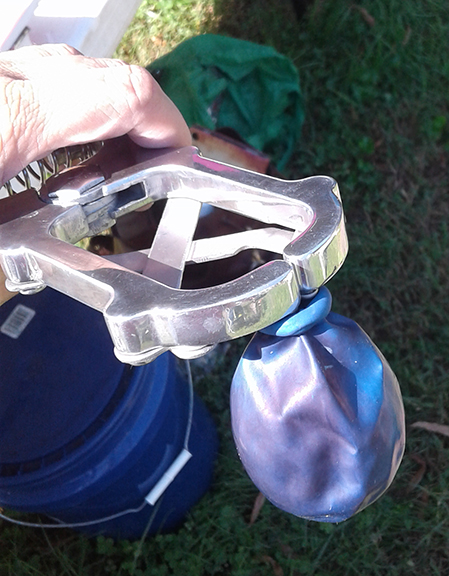
I slipped it onto a handy device. Yes, that is an elastrator, available at livestock suppliers.
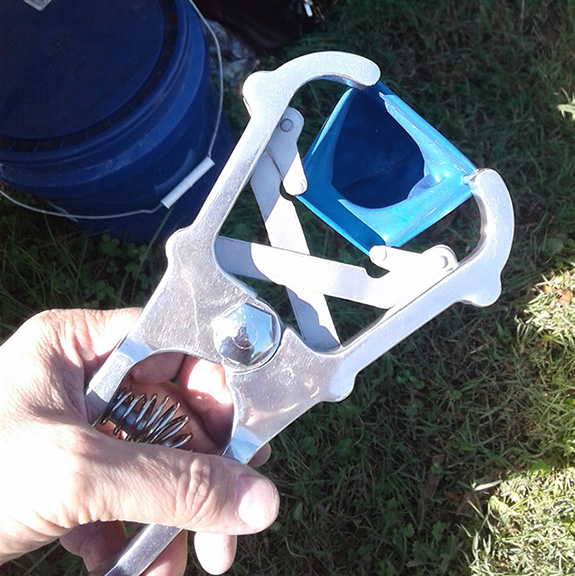
Opened it up,
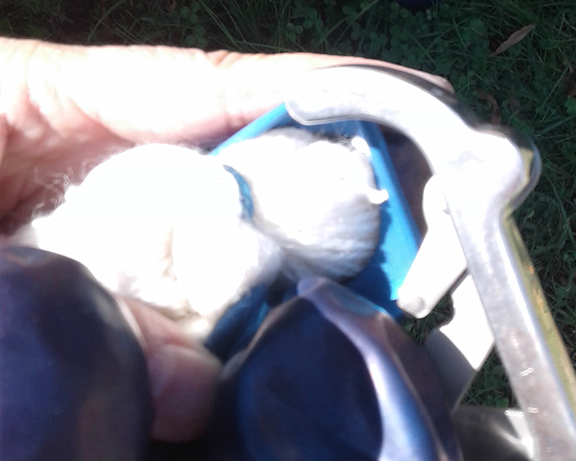
put the yarn in, and secured it with another rubber band.
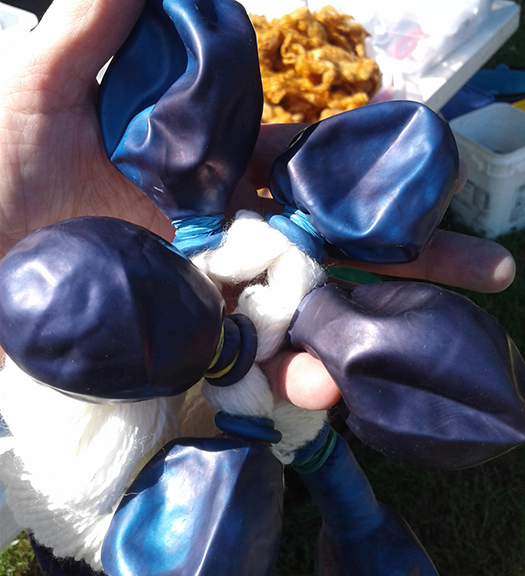
About halfway along.
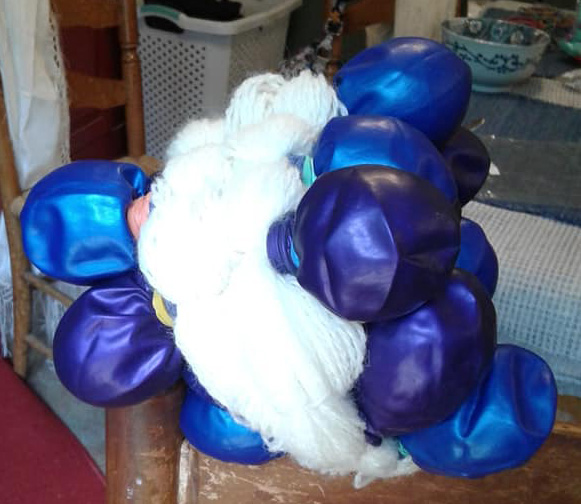
Special thanks to the DC Area Natural Dyes Group for the support, advice, and the dye at their dye meetings.
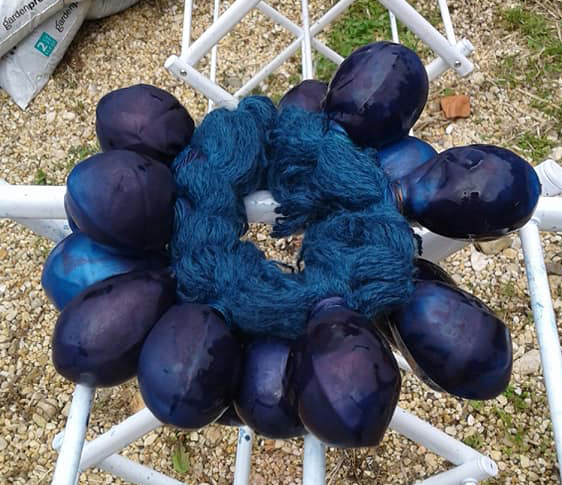
After a few more dips to get the color darker, I rinsed and took the wet yarn home, gave it a diluted vinegar rinse, and let it dry a few days.
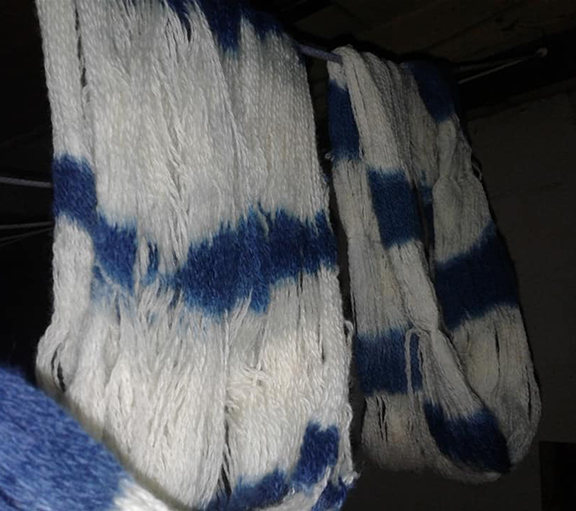
I finally unwrapped it to let it dry the rest of the way. The results were not perfectly even, but neither are the DAR stockings. Once dry, I re-reeled the skeins and will wind it into a ball when ready to knit.
© Carol Kocian and StockingFrameOfMind, 2019. Unauthorized use and/or duplication of this material without express and written permission from this site’s author is strictly prohibited. Excerpts and links may be used, provided that full and clear credit is given to Carol Kocian and StockingFrameOfMind with appropriate and specific direction to the original content.